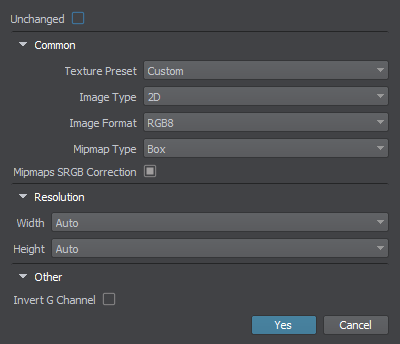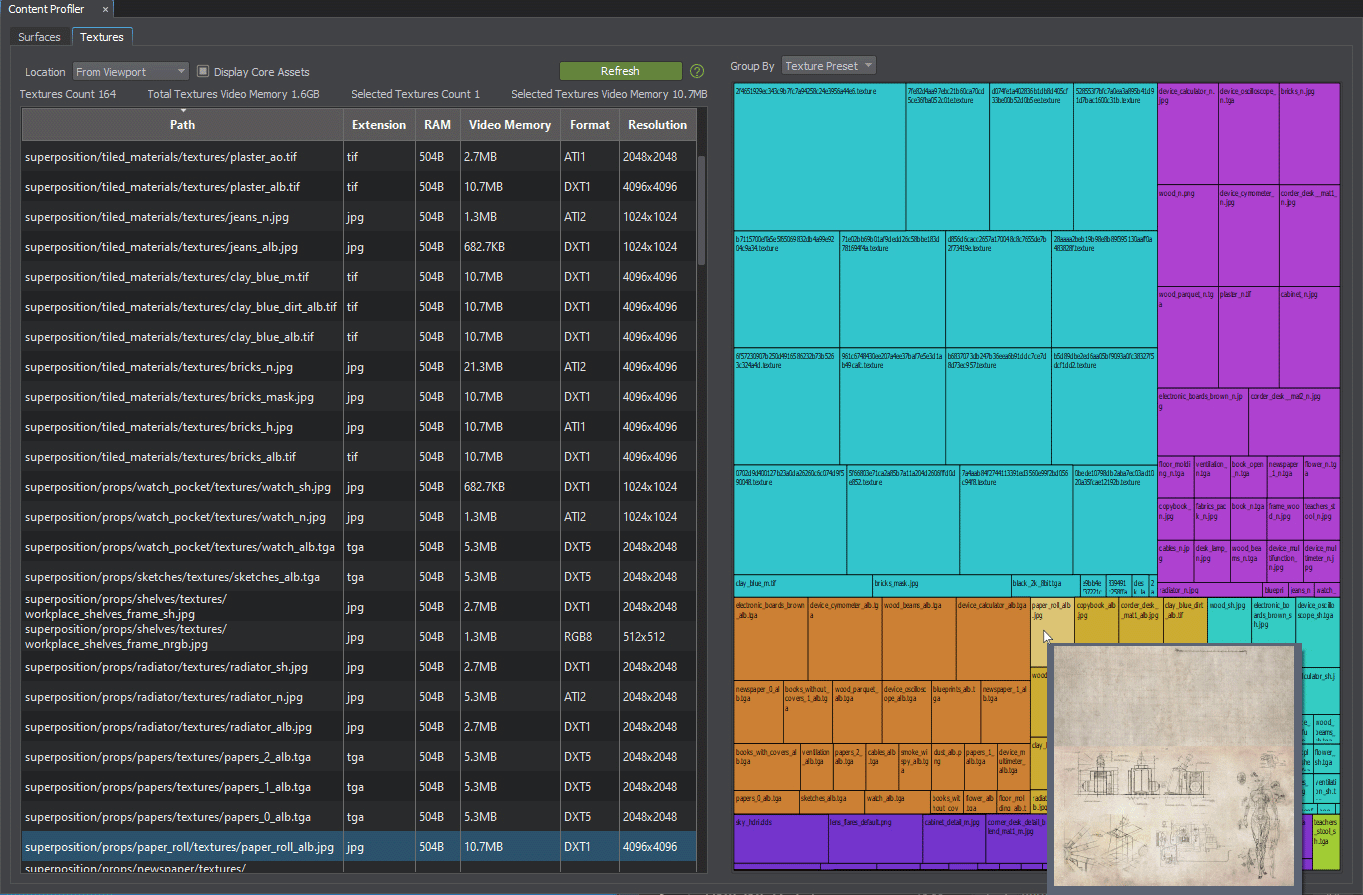Textures Optimization
Textures are often the most frequently used and the most memory-consuming assets. Big projects with a huge number of assets have to face the optimization stage to improve performance and have acceptable FPS.
An overview of the project's bottlenecks is given by Performance Profiler. By using the Rendering Performance Profiler, you can estimate the amount of video memory consumed by textures.

Adjust the global Textures Settings to quickly choose the desired Quality or Maximum Resolution of all textures in the project and thus decrease the video memory consumption. Mipmaps of lower resolution are used for rendering textures of lower quality.

Asynchronous Streaming#
Asynchronous Data Streaming of graphic resources ensures smooth texture loading without spikes and other impacts on performance at the first moments of run time.
- In UnigineEditor, open the Settings window and go to the Streaming section. Here you can check and switch the streaming mode for textures, if necessary.
- In the console, run the render_streaming_textures_mode command.
For the texture streaming optimization, you can enable texture mipmap loading, which significantly improves performance by reducing the memory consumption of texture streaming. This feature allows for the correct mipmap to be loaded at the current moment. When mipmaps loading is enabled, the textures that are not currently in use are unloaded.
To enable and configure mipmaps loading via UnigineEditor, do the following:
- Open the Settings window and go to the Streaming section.
- Toggle on the Mipmaps flag and specify the required Mipmaps Density.
Mipmaps Density sets the density of mipmaps relative to the screen resolution and helps to define which mipmap should be loaded at the current moment. You can specify different values for different quality presets. For example, you can set the density to less than 1 for the low-quality preset. In this case, the engine will load the low-resolution mipmaps, and the textures will look blurry.
Additionally, you may need to configure the Texture Streaming Density Multiplier for each texture in some materials to achieve the desired visual effect.
Texture Formats#
You can control each texture asset in its Import Parameters.

It is usually inappropriate to use textures with the Unchanged option enabled unless they have the *.dds or *.texture format. Otherwise, compression may affect the color data a lot (like with custom hdri textures).
It is crucial to use the correct Texture Preset for every texture, depending on its applicability. Thus, you ensure to use only needed channels and apply a proper compression algorithm. If the list does not provide a required preset, you can select the Custom option and choose the needed options.
You can also manually select the desired resolution of the texture in the Import Options.
Texture Profiler#
To clearly understand which assets can be optimized or deleted, Texture Profiler is used. Using this tool, you can see how much memory every texture used in the project takes, easily find it in Asset Browser, and delete or resize it.
To open the Texture Profiler window, choose Tools -> Content Profiler on the Menu Bar of UnigineEditor and switch to the Textures tab. By using the Location switch, you can choose to inspect the textures either from the entire video memory or only the ones displayed in the Editor viewport at the moment.

Texture Profiler allows sorting by path, extension, occupied RAM or Video Memory size, format, or resolution.
The information on this page is valid for UNIGINE 2.19 SDK.